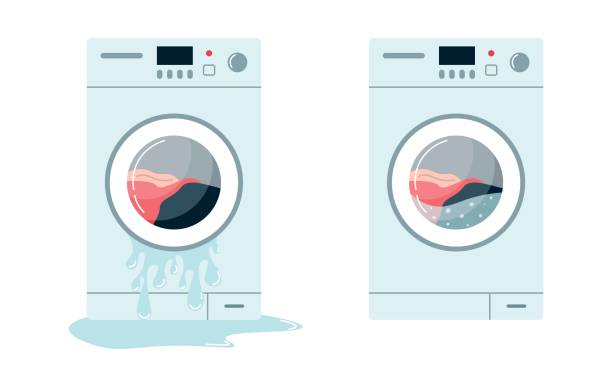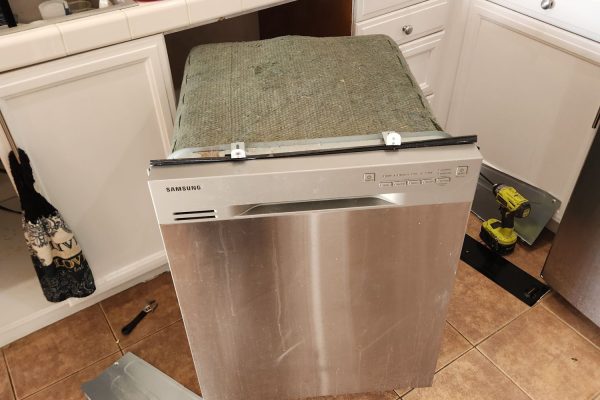A washing machine can break down at any time. The cause of the breakdown can be anything – a failure in electronics, torn things, a cracked tank, etc. Before calling a repairman, you need to drain the water and take out the clothes. The material contains popular ways to solve the problem, as well as tips for washing machine care.
When it is necessary to drain the water
Sometimes washing machines break right during washing. You can clean the pipes yourself. It is better to entrust the repair of the engine and other components to a professional, but you should start by draining the water.
If you leave it, things can stagnate, and clothes and the equipment itself will have an unpleasant sewage smell. Therefore, first of all, you need to get rid of liquids. If you do not drain the water very carefully, mold may appear inside the device, which is quite difficult to get rid of.
Listed below are the most common and effective tips on how to remove stagnant water from a washing machine.
How to drain water from a washing machine
You can try to drain the water through the menu of the washing machine. This will work in the event of a software failure in the equipment, which occurred due to a power outage or other insignificant reasons.
What to do to make the water go away? Getting rid of stagnant liquids is similar for all washing machines. However, some machines have their own small differences. About them – below.
Speaking of LG:
– Press “Power”;
– Press the “Spin” button several times in a row until “1” lights up on the display;
– with the help of the button labeled “Spin”, select the “No spin” mode and tap on “Start”.
Speaking of Samsung:
You can drain the water in the Samsung machine according to the scheme proposed above:
- Select one of the “Spin” and “Drain” modes. They free the drum from water, thanks to which the door can be unlocked.
- In the event of an E2 or 5C error, it should be completely disconnected from the electrical network, screw in the liquid supply valve, and drain the water mechanically.
Speaking of Bosch:
The same scheme that was proposed above will help in draining the water:
– “Spin” or “Drain” mode;
– if the washing machine from Bosch illuminates error d02, you should get rid of the water by manual methods, which are indicated below.
If even after turning on “Drain” the door will not open, it is necessary to drain the water through the filter or spare hose.
Important: The effectiveness of the listed instructions depends on the model of the washing machine. In some machines, the sequence of actions may differ.
The main methods of forced drainage of water
These are universal methods applicable to most similar equipment – whether it’s “Malyutka” from the 80s or the modern Samsung WW60K42109SDUA. They should be used if the device refuses to drain water automatically.
Through the drain hose
Modern washing machines have a hose for the direct outflow of water, which tends to clog or pinch. If the water does not flow, first of all, it is worth inspecting it for kinks and blockages.
If they are missing, the action algorithm is as follows:
- Disconnect the hose and remove it from the latches
- Lower the free part of the pipe into the reservoir, which will be below the tank (basin, bucket, bathtub)
Through the drain filter
It is located in the lower part of modern washing machines. Its main task is to prevent small objects (such as coins, buttons, and pieces of plastic) from entering the pump. With regular work, it tends to clog. Periodically, you need to remove the filter and remove everything that is in it. Otherwise, after a few years, the equipment may unexpectedly break down without the possibility of recovery.
Interesting: The filter is the lowest part of the system, so when draining water through it, you can be sure that no water will remain inside the machine.
Procedure:
– put an unnecessary rag or place dishes with low sides;
– turn the filter to the left and pull it towards you;
– remove stuck objects and let the remaining water drain;
close the filter.
Through the emergency drain hose
It is used if for some reason it is not possible to use the main one. Most machines have an emergency hose, both budget washers and expensive ones.
Most often, the emergency hose is hidden under a special protective cover. The instructions will indicate the exact location.
To completely drain the liquid, you should remove the lid, place the edge of the whip in any tank where the water will flow, and open the valve. Usually, the diameter of the pipe is modest, so the drain will take longer than when using other methods.
Directly by opening the hatch
If all the proposed methods are not suitable, then you can open the door and drain the water with improvised means. When opening, it is advisable to tilt the washing machine back by 10-15 degrees. In the normal position, the device will not allow you to open the door, as then the system will “decide” that when the door is opened, water will flood the entire floor. As a rule, these are front-loading devices. Machines with a vertical loading mode at any time.
In some models, there is a protection system that does not allow you to open the hatch after disconnecting from the network. Then it is advisable to try other methods, as there is a risk of completely breaking the machine.
Through the drain pipe
This is a hose that connects the pump and the tank. With regular use, it can become clogged, due to which the liquid stops flowing into the pump. Since it will be necessary to remove the front of the device to clean the nozzle, it is advisable to call qualified repairmen who will do everything well.
The algorithm for draining water residues is as follows:
– Remove the front of the washing machine.
– Loosen and pull off the hose clamps.
– Place a basin for draining the liquid.
– Tighten the nozzle in the direction that will be directed against the pump.
– Remove the pipe after removing contamination.
Want the best washing machine repair in San Diego County?
Call us! We are a leading service provider thanks to the excellent quality of work performed by our professionals. We use only high-quality parts recommended by the washing machine manufacturer. Forget about any discomfort with our friendly and professional team. With us, you get the highest quality service and the most friendly approach. Our highly qualified employees will do everything to make you forget about any problems with your washing machines. Now, these are our problems.
Contact us


